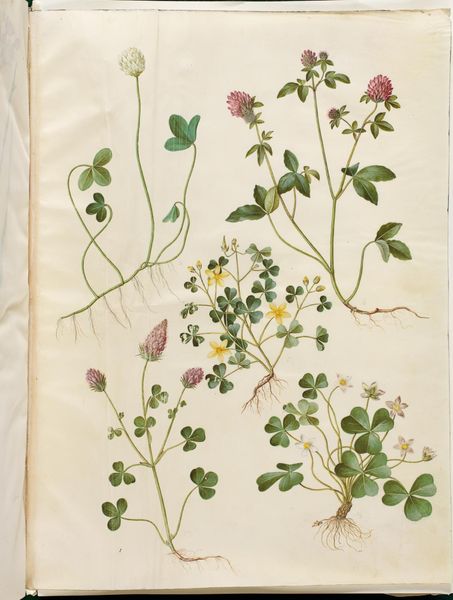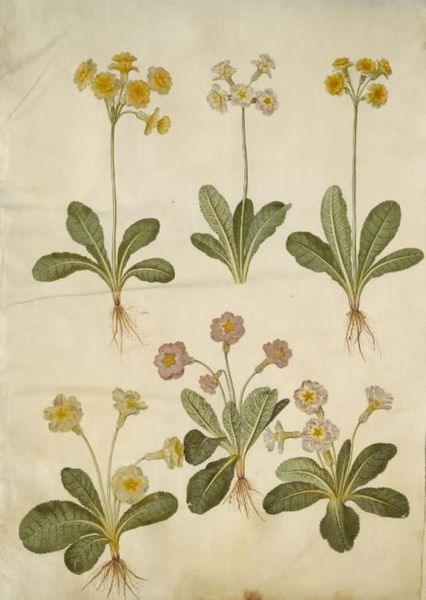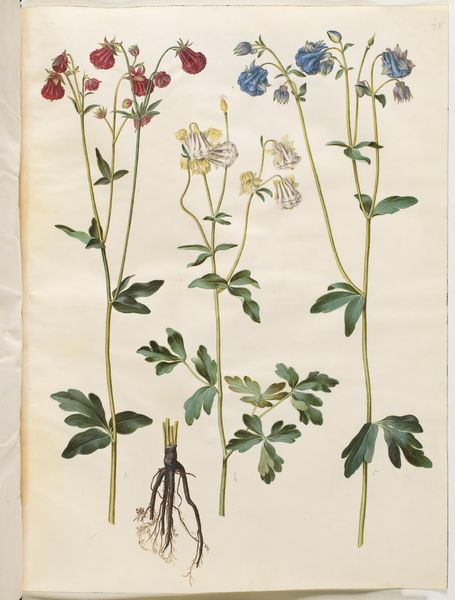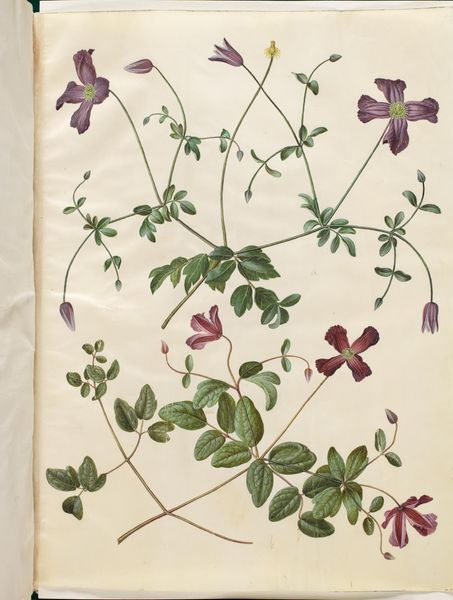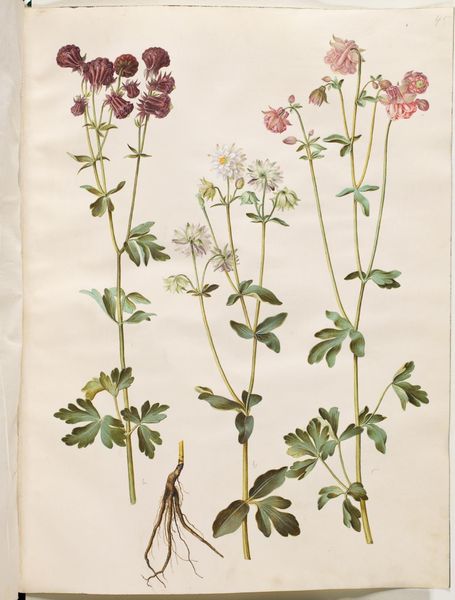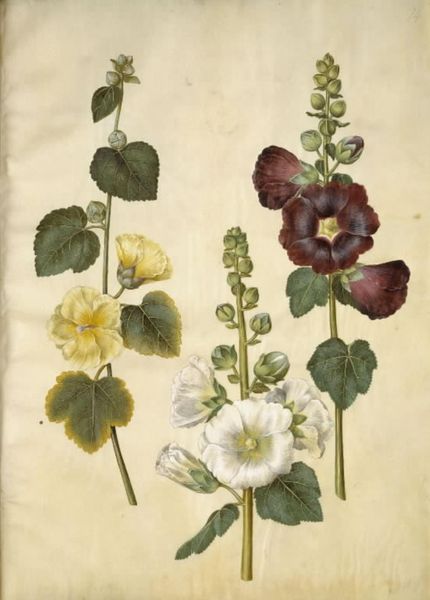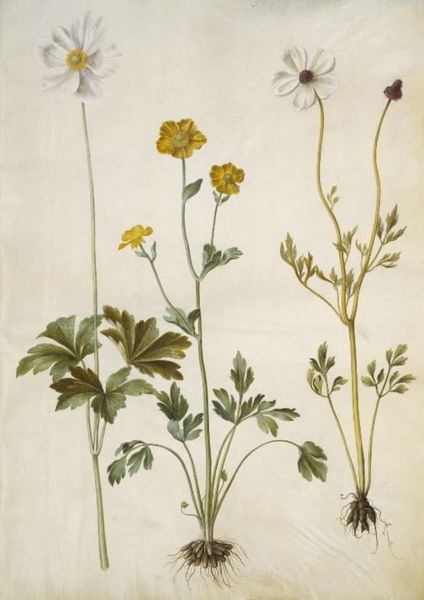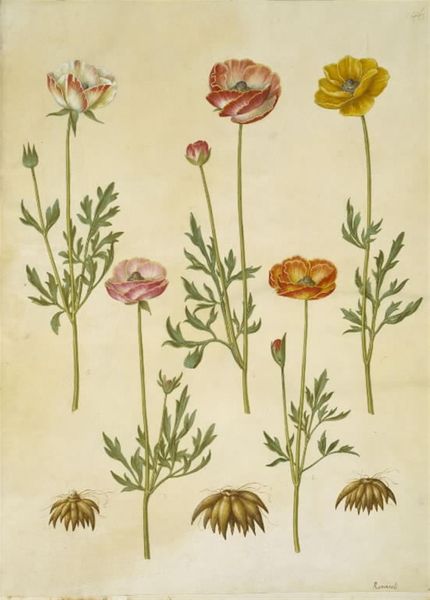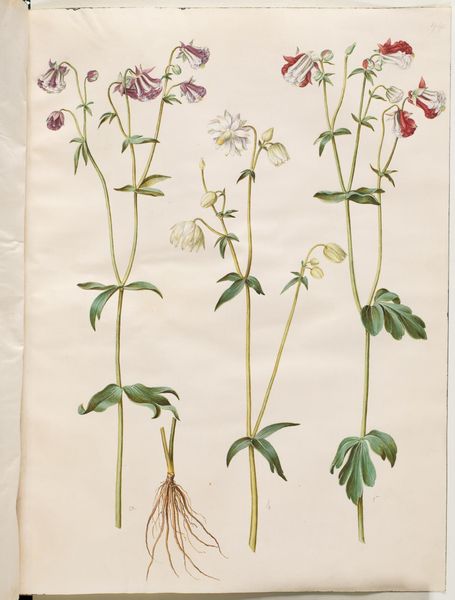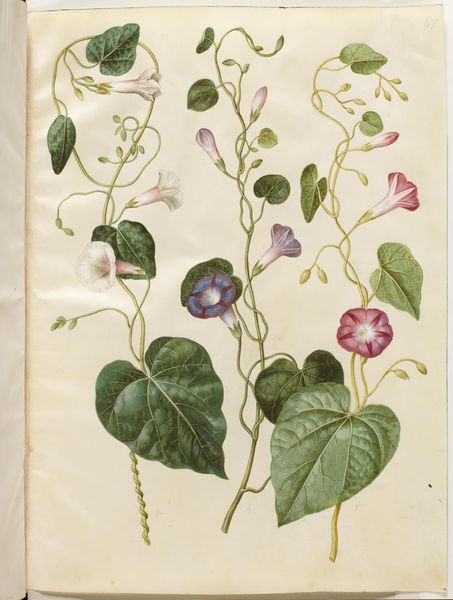
Anemone apennina (appenniner-anemone); Tiarella cordifolia (almindelig skumblomst); Anemone trifolia (trilling-anemone); Ranunculus asiaticus (have-ranunkel) 1649 - 1659
0:00
0:00
drawing, gouache, watercolor
#
drawing
#
water colours
#
gouache
#
watercolor
#
watercolour illustration
#
northern-renaissance
#
academic-art
#
watercolor
Dimensions: 505 mm (height) x 385 mm (width) (bladmaal)
Hans Simon Holtzbecker painted these botanical studies, 'Anemone apennina; Tiarella cordifolia; Anemone trifolia; Ranunculus asiaticus', using watercolor on paper sometime in the 17th century. Watercolour is a particularly interesting medium here; it demands a very different approach than oil paint. Instead of building up layers of pigment, the artist coaxes color from the white ground of the paper itself. Notice how the translucence of the washes gives the flowers their delicate appearance. Holtzbecker’s technique would have required not just a light touch, but also deep knowledge of the plants he portrayed. He would have needed to carefully observe and record the natural world. The detailed, scientific approach speaks to the cultural context of the time. Botanical illustration was crucial in the 17th century. As Europe expanded its colonial reach, and plants were collected from around the world, accurate depictions were vital for trade and scientific study. Here, the artist’s skilled hand meets the expanding horizons of his era, blurring the line between art and documentation.
Comments
No comments
Be the first to comment and join the conversation on the ultimate creative platform.
